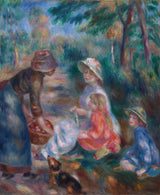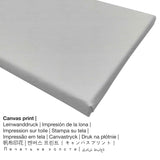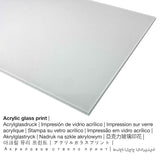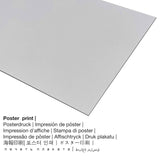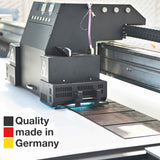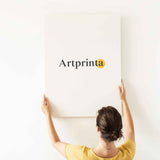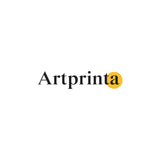Pierre-Auguste Renoir, 1890 - Onye na-ere Apple - mbipụta nka mara mma
Ụtụ gụnyere. Mbupu gbakọrọ na ndenye ọpụpụ.
Nchịkọta ngwaahịa
The nkà nke oge a ihe esere ihe nka nwoke onye na-ese ihe Pierre-Auguste Renoir in 1890. The painting measures the dimensions of Nhazi: 93 x 82,2 x 9,5 cm (36 5/8 x 32 3/8 x 3 3/4 na); Edebereghị: 65,8 x 54,5 cm (25 7/8 x 21 7/16 na) e jikwa nkà na-ese ihe mmanụ na akwa ákwà. Signed center right: a. renoir / 1864 is the artwork's inscription. The artwork forms part of the Ụlọ ihe ngosi nka nke Cleveland nchịkọta dijitalụ dị na Cleveland, Ohio, United States nke America. a nkà nke oge a ngalaba ọha artwork is included with courtesy of The Cleveland Museum of Art. Creditline of the artwork: Bequest of Leonard C. Hanna, Jr.. Furthermore, alignment is Eserese ya na oke onyonyo nke 1: 1.2, which means that the length is 20% shorter than the width. The illustrator, painter, sculptor Pierre-Auguste Renoir was an artist, whose art style can mainly be attributed to Impressionism. The Impressionist painter was born in 1841 na Limoges, Nouvelle-Aquitaine, France na nwụrụ anwụ na afọ nke 78 n'afọ 1919.
Nweta ihe kacha amasị gị
Nchịkọta nhọrọ ngwaahịa na-enye gị ohere ịhọrọ ngwa na nha nke gị. Nhọrọ ndị a dị maka n'otu n'otu:
- Ihe odide acrylic glass: An acrylic glass print, which is often denoted as a UV print on plexiglass, will transform your favorite original work of art into great décor and is a distinct alternative option to canvas or dibond prints. The work of art is custom-made with the help of modern UV printing machines. The major advantage of an acrylic glass print is that contrasts as well as color details become identifiable thanks to the very subtle gradation in the picture.
- Kwaaji: The printed canvas material applied on a wooden stretcher frame. The great advantage of canvas prints is that they are relatively low in weight. That means, it is easy and straightforward to hang up your Canvas print without the use of additional wall-mounts. Canvas prints are suited for all types of walls.
- Akwụkwọ mmado ebipụtara (akwa akwa akwa): The Artprinta poster print is a UV printed flat canvas paper with a nice structure on the surface. Please bear in mind, that depending on the absolute size of the poster print we add a white margin 2-6 cm round about the work of art to facilitate the framing.
- Metal (aluminium debond mbipụta): Aluminium Dibond prints are prints on metal with an outstanding effect of depth. For your Aluminium Dibond print, we print the selected artwork onto the aluminium composite white-primed surface. The white and bright parts of the work of art shine with a silk gloss, however without any glow. The colors of the print are luminous and vivid, details are crisp and clear.
Important information: We try all that we can in order to depict the art products as clearly as possible and to showcase them visually on the different product detail pages. Nevertheless, the colors of the print materials, as well as the imprint may vary marginally from the image on your device's monitor. Depending on your screen settings and the condition of the surface, not all colors can be printed 100% realistically. Bearing in mind that the are printed and processed by hand, there may also be minor variations in the exact position and the size of the motif.
Nkọwa ihe ahaziri ahazi
| Nkewa edemede: | ọrụ mgbidi |
| Mmeputakwa: | mmeputakwa n'ụdị dijitalụ |
| Usoro mmepụta: | UV kpọmkwem obibi |
| Mmalite ngwaahịa: | German mere |
| Ụdị ngwaahịa: | mmepụta ihe na-achọ |
| Eji ngwaahịa a chọrọ: | Ụlọ mgbidi, nchịkọta nka (mmepụta) |
| Ndozi onyonyo a: | usoro eserese |
| Njikwa oyiyi: | (ogologo: obosara) 1: 1.2 |
| Nsonaazụ nke oke onyonyo: | ogologo bụ 20% mkpụmkpụ karịa obosara |
| Akụrụngwa dị: | Mbipụta iko acrylic (nke nwere ezigbo mkpuchi iko), mbipụta akwa akwa, mbipụta akwụkwọ mmado (akwụkwọ kwaaji), mbipụta ọla (aluminium dibbond) |
| Ọdịiche dị n'okirikiri akwa akwa akwa (akwa akwa): | 50x60cm - 20x24", 100x120cm - 39x47", 150x180cm - 59x71" |
| Mbipụta iko acrylic (nwere ezigbo mkpuchi iko) nhọrọ nha: | 50x60cm - 20x24", 100x120cm - 39x47" |
| Ụdị akwụkwọ mmado (akwụkwọ kwaaji) dị iche iche: | 50x60cm - 20x24", 100x120cm - 39x47" |
| Nhọrọ nha nha nke Dibond (ihe alumnium): | 50x60cm - 20x24", 100x120cm - 39x47" |
| Igwe onyonyo: | enweghị etiti |
Tebụl a haziri ahazi nke ihe osise
| Aha eserese: | "The Apple Seller" |
| Nhazi nke ihe nka: | sere |
| Category: | nkà nke oge a |
| oge: | 19th narị afọ |
| Afọ nka: | 1890 |
| Afọ nka: | ihe karịrị afọ 130 |
| Usoro izizi: | mmanụ na akwa ákwà |
| Ogo nke ọrụ nka izizi: | Nhazi: 93 x 82,2 x 9,5 cm (36 5/8 x 32 3/8 x 3 3/4 na); Edebereghị: 65,8 x 54,5 cm (25 7/8 x 21 7/16 na) |
| Akara aka nka nka: | bịanyere aka na etiti aka nri: a. afọ / 1864 |
| Ụlọ ihe ngosi nka / ebe: | Velọ ihe ngosi nka nke Cleveland |
| Ebe ngosi nka: | Cleveland, Ohio, United States nke America |
| Weebụsaịtị nke ihe ngosi nka: | www.clevelandart.org |
| Ụdị ikike nka: | ngalaba ọha |
| Site n'aka: | Velọ ihe ngosi nka nke Cleveland |
| kreditline ọrụ nka: | Arịrịọ nke Leonard C. Hanna, Jr. |
Ozi ndabere na onye na-ese ihe
| Aha onye nka: | Pierre-Auguste Renoir |
| Aha ndị ọzọ: | Auguste Renoir, Renoir, Renoir Pierre August, August Renoir, Pierre Auguste Renoir, רנואר אוגוסט, Renoar Pjer-Ogist, Renoir August, Renoir Pierre-Auguste, Renoir Auguste, pierre august renoir, a. renoir, p.a. renoir, renoir a., firmin auguste renoir, Renoir Pierre Auguste, Pierre-Auguste Renoir, Renuar Ogi︠u︡st, רנואר פייר אוגוסט, renoir p.a. |
| Gender: | nwoke |
| Obodo onye nka: | French |
| Ọrụ: | onye na-ese ihe, onye na-ese ihe |
| Obodo onye nka: | France |
| Nkewa onye nka: | omenkà nke oge a |
| Ụdị nka: | Mmetụta |
| Afọ ọnwụ: | 78 afọ |
| A mụrụ: | 1841 |
| Obodo ọmụmụ: | Limoges, Nouvelle-Aquitaine, France |
| Afọ nwụrụ: | 1919 |
| Ebe ọnwụ: | Cagnes-sur-Mer, Provence-Alpes-Cote d'Azur, France |
© Copyright - Artprinta.com (Artprinta)
General information by The Cleveland Museum of Art (© Nwebiisinka - site na Cleveland Museum of Art - Velọ ihe ngosi nka nke Cleveland)
This painting depicts a young country girl offering apples to Renoir's wife, Aline. The boy in the straw hat may be the artist's nephew, Edmond, but the young girl with the ribbon in her hair has not been identified. Bathed in soft, dappled sunlight, the figures are united through the fluid brushstrokes that cover the canvas. The leaping dog provides an accent of humor and motion in an otherwise tranquil scene. The picture was probably completed at Essoyes, in eastern France.

